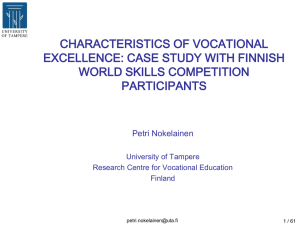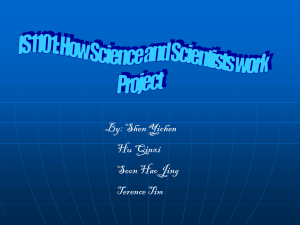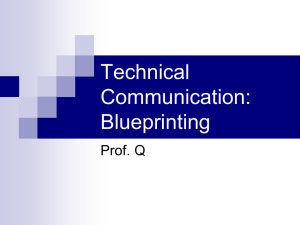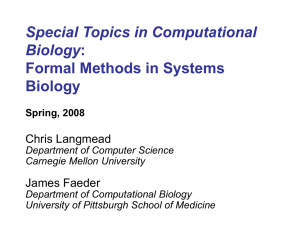Modeling of Vocational Excellence
advertisement
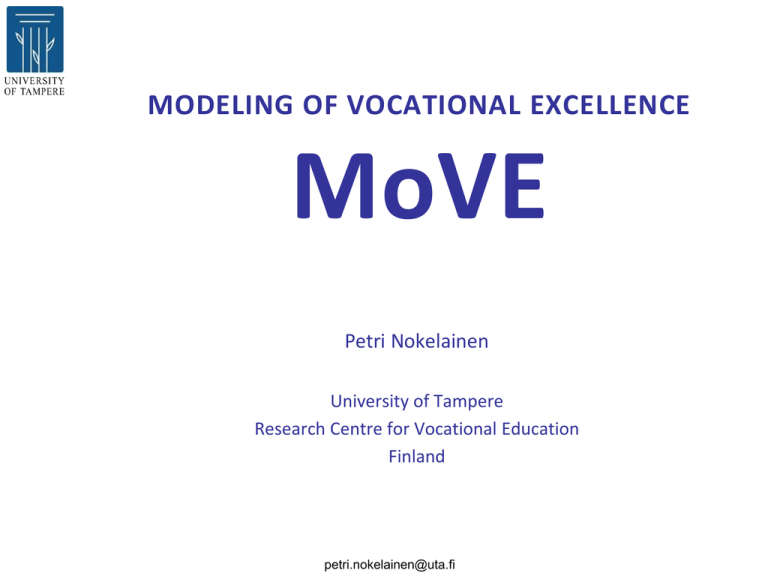
MODELING OF VOCATIONAL EXCELLENCE MoVE Petri Nokelainen University of Tampere Research Centre for Vocational Education Finland petri.nokelainen@uta.fi Research team Adjunct professor Petri Nokelainen Professor Pekka Ruohotie Adjunct professor Kari Korpelainen petri.nokelainen@uta.fi Acknowledgements The study was funded by Finnish Ministry of Education and Culture and University of Tampere, Finland. Authors would like to thank all the Finnish 2005 Helsinki, 2007 Shizuoka and 2009 Calgary team members, and also Timo Lankinen, Veijo Hintsanen, Mika Tammilehto, Immo Pylvänen, Eija Alhojärvi, Seija Rasku, Heikki Saarinen, Atte Airaksinen, Juha Minkkinen, Matti Kauppinen, Tuomas Eerola, Hannu Immonen and Martti Majuri, among others, for their invaluable support. petri.nokelainen@uta.fi International research collaboration International research would not have been possible without strong support from World Skills International. Special thanks to David Hoey and Jack Dusseldorp! We also appreciate our current research partners who have seen the added value of MoVE: Helen Smith (RMIT) and Judy Turnbull (Skills Australia) Jenny Shackleton and Simon Bartley (UK Skills), Cathy Stasz (SKOPE, Oxford University) petri.nokelainen@uta.fi Outline • ”Modeling of Vocational Excellence” (MoVE, 2007 – 2008) – Background – Results (interview) • ”Actualizing Vocational Excellence” (AVE, 2009 – ) – Background – Results (survey) petri.nokelainen@uta.fi Introduction • A two-year (2007-2008) “Modeling of Vocational Excellence” (MoVE) project was funded by the Finnish Ministry of Education and Culture and University of Tampere, Finland. • During the study, a sample (N = 67) representing Finnish World Skills Competition (WSC) competitors (2005 Helsinki and 2007 Shitsuoka), their trainers, working life representatives and parents was collected. petri.nokelainen@uta.fi Introduction • Semi-structured interview was carried out to answer the following research questions: (1) What characteristics specify WSC competitors? (2) How the WSC competitors’ characteristics differ during training period, competitions and working life? (3) What characteristics specify WSC competitors’ initial interest towards the work field, perseverance in acquiring a vocational skill and mastery of the skill? (4) What characteristics specify WSC competitors’ employer? petri.nokelainen@uta.fi Introduction • Survey* was carried out to answer the following research questions: (5) What are the WSC competitors’ most essential natural abilities? (6) What are the WSC competitors’ most essential selfregulatory abilities? (7) What is the influence of home and school atmosphere to the WSC competitors talent development? * These questions are discussed in the second part of the presentation with a combined sample of Shizuoka and Calgary team members (N = 64). petri.nokelainen@uta.fi Theoretical framework • Bloom: Talent development taxonomy (1985). • Ericsson: Development of expertise (1993, 2006). • Gagné: Differentiated Model of Giftedness and Talent (2004). • Gardner: Multiple Intelligences (1983, 1993, 1999). • Greenspan, Solomon & Gardner: Cognitive and social skills on talent development (2004). • Pintrich: Intrinsic and extrinsic goal orientations, control and efficacy beliefs (2000). • Midgley et al.: Patterns of adaptive learning (2000). • Zimmerman: Sociocognitive approach to self-regulation (1998, 2000). • Weiner: Attributions for success and failure (1986). petri.nokelainen@uta.fi Theoretical framework: Differentiated Model for Giftedness and Talent (DMGT) (Gagné, 2004) petri.nokelainen@uta.fi Theoretical framework: Gardner’s Multiple Intelligences Theory (1983) (1) Linguistic intelligence (2) Logical-mathematical intelligence (3) Musical intelligence (4) Spatial intelligence (5) Bodily-kinesthetic intelligence (6) Interpersonal intelligence (7) Intrapersonal intelligence --(8) Spiritual intelligence (9) Environmental intelligence petri.nokelainen@uta.fi Theoretical framework: Adaptation of Zimmerman’s Self-regulation Model (Zimmerman, 2000; Nokelainen, 2008) petri.nokelainen@uta.fi 12 / 61 Theoretical framework: Causal order of components in DMGT (Nokelainen & Ruohotie, 2009; Tirri & Nokelainen, 2011) petri.nokelainen@uta.fi petri.nokelainen@uta.fi Method: Participants INTERVIEW • Four Finnish WSC 2005 and four WSC 2007 competitors (n = 8) were interviewed – Six males (Mage = 21 years) and two females (Mage = 20 years). • Also their trainers, working life representatives and parents (n = 22) were interviewed. • WSC competitors in this study represent four skill categories, which are linked to the Multiple Intelligence theory (Gardner, 1983): – IT/Software Applications (logical-mathematical). – Web Design (spatial, logical-mathematical). – Plumbing (bodily-kinesthetic, spatial). – Beauty Therapy (interpersonal, bodily-kinesthetic, spatial). petri.nokelainen@uta.fi Method: Instrument INTERVIEW • • Empirical data was collected in 2007 with a semistructured interview. The interview concentrated on two major aspects: 1. Influence of self-regulation and cognitive and social skills on talent development (Greenspan, Solomon & Gardner, 2004; Zimmerman, 1998). 2. Importance of intrinsic and extrinsic motivation in initial participation to the training, perseverance and mastery of the skill (Bloom, 1985). petri.nokelainen@uta.fi Method: Participants SURVEY • Finnish WSC 2007 team (n = 25) – 16 males and nine females (Mage = 22 years) and their parents (n = 12) responded to surveys. • WSC competitors represent 20 skill categories, which are linked to the MI theory, for example: – Landscaping (environmental, bodily-kinesthetic, spatial). – Floristry (environmental, spatial). – Polymechanics, IT/Software Applications (logicalmathematical, spatial). – Nursing, Beauty Therapy (interpersonal, bodilykinesthetic). petri.nokelainen@uta.fi Method: Instrument SURVEY • Numerical empirical data was collected in 2007 with the following self-rating instruments: – Multiple Intelligences Profiling Questionnaire (MIPQ III, Tirri, K., Komulainen, Nokelainen & Tirri, H., 2003; Tirri & Nokelainen, 2008). – Abilities for Professional Learning Questionnaire (APLQ, Nokelainen & Ruohotie, 2002). – Self-attitudes and Attributes Scales (SaaS, Campbell, 1996; Campbell, Tirri, Ruohotie & Walberg, 2004). – Family and School Influences Questionnaire (FA, SA, Campbell, 1996). petri.nokelainen@uta.fi Results: Interview 1. What characteristics specify a successful WSC competitor? petri.nokelainen@uta.fi Results: Interview INTRINSIC CHARACTERISTICS VOLITION Perseverance Time management MOTIVATION Intrinsic SELF-REFLECTION Extrinsic Stress tolerance VOCATIONAL TALENT CHARACTERISTICS INTELLECTUAL SENSORIMOTOR SOCIOAFFECTIVE NATURAL ABILITIES petri.nokelainen@uta.fi Results: Interview 1. Self-reflection (stress tolerance) • Mental training 2. Volition (perseverance, time management skills) • Total mastery of work skills 3. Cognitive skills (development potential) • Shift from uncontrollable to controllable attributions 4. Extrinsic goal-orientation (competitiveness, ambition) • Promotion of advances of competitions for future career 5. Intrinsic goal-orientation (interest towards work) • Meaningful training tasks, interesting artefacts, home/teacher support 6. Social skills • Collaborative tasks during training petri.nokelainen@uta.fi Results: Interview petri.nokelainen@uta.fi Results: Interview INTRINSIC CHARACTERISTICS VOLITION Perseverance Time management MOTIVATION Intrinsic SELF-REFLECTION Extrinsic Stress tolerance VOCATIONAL TALENT CHARACTERISTICS INTELLECTUAL SENSORIMOTOR SOCIOAFFECTIVE NATURAL ABILITIES petri.nokelainen@uta.fi Results: Interview – Results are parallel to findings from US Olympic Champions research (Gould, Dieffenbach & Moffett, 2001) and international study of Academic Olympians in Mathematics, Physics and Chemistry (Campbell, Tirri, Ruohotie & Walberg, 2004; Heller & Lengfelder, 2000; Wu & Chen, 2001). – Important role of self-regulation is justified in theoretical sense, as it separates experts from workers (Day, Arthur & Gettman, 2001; Pillay, 1998; Ruohotie, 2004). – Small role of social skills was an expected finding as the four skill categories (IT/Software Applications, Web Design, Plumbing, Beauty Therapy) involved individual competition tasks. petri.nokelainen@uta.fi Results: Interview 2. How the WSC competitors’ characteristics differ during training period, competitions and working life? petri.nokelainen@uta.fi Results: Interview petri.nokelainen@uta.fi Results: Interview 1. Perseverance and self-reflection alongside with intellectual and sensorimotorical abilities were important in all three career stages. 2. The role of social skills was strongest in working life. • As the role of social skills is important for career development, this is one possible development target for vocational schools/institutions. 3. Results showed only minor differences between intrinsic and extrinsic goal-orientations. • However, motivation is a prerequisite for volition. petri.nokelainen@uta.fi Results: Interview petri.nokelainen@uta.fi Results: Interview petri.nokelainen@uta.fi Results: Interview 3. What characteristics specify WSC competitors’ a) initial interest towards the work field, b) perseverance in acquiring a vocational skill and c) mastery of the skill? petri.nokelainen@uta.fi Results: Interview petri.nokelainen@uta.fi Results: Interview 1. Institutional and trainers’ support are important throughout the three skill acquisition stages. 2. Intrinsic goal-orientation is more important at the initial stage than extrinsic goal-orientation, but the roles change during training process (perseverance). 3. Importance of motivational aspects decrease towards the mastery level. • International research has not been successful showing causal relationship between motivational aspects and learning outcomes. 4. Importance of future work security and possibilities increase towards the mastery level. 5. Role of social motivation (importance of friends and WSC team members) stay quite small and stable throughout the process. petri.nokelainen@uta.fi Results: Interview petri.nokelainen@uta.fi Results: Interview petri.nokelainen@uta.fi Results: Interview 4. What characteristics specify WSC competitors’ employer? petri.nokelainen@uta.fi Results: Interview 1. 2. 3. 4. 5. Challenging work tasks Freedom and responsibility Logical and fair leadership Acknowledgement of life long learning Competitive salary petri.nokelainen@uta.fi Outline • ”Modeling of Vocational Excellence” (MoVE, 2007 – 2008) – Background – Results (interview) • ”Actualizing Vocational Excellence” (AVE, 2009 – ) – Background – Results (survey) petri.nokelainen@uta.fi Current research • ”Actualizing Vocational Excellence” (AVE, 2009 – 2011) project is funded by the Finnish Ministry of Education and Culture and University of Tampere, Finland. • Major goals are – to extend the MoVE study to cover 10-12 WSC competition areas (both analyzed with qualitative and quantitative methods) – to study life management and work ethics together with competitor’s level of innovativeness and entrepreneurship – to investigate WSC competitors success in working life • control group is included for all the abovementioned areas petri.nokelainen@uta.fi Design petri.nokelainen@uta.fi Research questions • Interview 1. What characteristics specify WSC competitors? 2. What life management skills specify WSC competitors? 3. What is the level of moral thinking (work ethics) of WSC competitors? 4. What is the level of innovativeness and entrepreneurship of WSC competitors? petri.nokelainen@uta.fi Research questions • Interview 5. How the WSC competitors’ characteristics differ during training period, competitions and working life? 6. What characteristics specify WSC competitors’ initial interest towards the work field, perseverance in acquiring a vocational skill and mastery of the skill? 7. What characteristics specify WSC competitors’ employer? 8. How WSC competitors' know-how meets the expectations of working life and how their potential is actualized? petri.nokelainen@uta.fi Research questions • Survey 9. What are the WSC competitors' most essential natural abilities? (MIPQ III) 10. What are the WSC competitors’ most essential selfregulatory abilities? (APLQ, PALS) 11. What are the WSC competitors’ most essential life management skills? (CMSRVE) 12. What are the WSC competitors’ most essential ethical sensitivity skills? (MOJVE) 13. What is the influence of domain and non-domain specific factors to the WSC competitors’ talent development? petri.nokelainen@uta.fi Current phase of the AVE project Interview • 29 interviews conducted, analysis in progress. • Three participants from each workplace: – Finnish WSC medalist from 2005 Helsinki or 2007 Calgary, who has more than two year work experience after the competition. – Control group member (similar age and work experience, no WSC training). – Employer. petri.nokelainen@uta.fi Current phase of the AVE project Survey • A combined sample of 2007 (Shizuoka, Japan) and 2009 (Calgary, Canada) teams contains 64 competitors. • The response rate was 77 per cent of the total target population (N = 83). • The sample consists of 44 male (68.8%) and 20 female (31.2%) competitors. • Male respondents’ age average was 20.9 years (SD = 1.676) and female respondents 20.8 years (SD = 1.735). petri.nokelainen@uta.fi Current phase of the AVE project Survey • The participants of the survey study represent 23 WSC categories covering most of the MI theory’s intelligence areas. • The concepts of expertise and excellence were defined in this study as follows: – All the Finnish WSC team members eligible to compete at international level were considered to be vocational experts and they were coded into group B (positions 8 – 11 in international competitions) or group C (positions 12 – ). – Only the most successful competitors were coded into group A (positions 1 – 7), representing vocational excellence in the study. petri.nokelainen@uta.fi Results: Survey • Success in middle school did not predict vocational skill competition success. – Negative correlation was found between middle school math, native language, first foreign language, religion, music and handicraft marks and skill competition success. • Only exception was a zero correlation with middle school sports mark. – The finding is plausible as those subject domains are general, not specific to vocational skills. petri.nokelainen@uta.fi Results: Survey • Success in vocational studies did predict vocational skill competition success. – Positive correlation (r = .41) was found between vocational school average mark and skill competition success. • Controlling for age or gender did not change the result. – If skills needed in competitions represent real working life skills, one may further conclude that success in vocational studies predicts initial level of vocational expertise. • Limitations: Small sample, difference between competition and working life skills. petri.nokelainen@uta.fi Results: Survey 5. What are the WSC competitors' most essential natural abilities*? * Combined sample of Shizuoka and Calgary (N = 64) Multiple Intelligences theory: (1) Linguistic, (2) Logical-mathematical, (3) Musical, (4) Spatial, (5) Bodily-kinesthetic, (6) Interpersonal, (7) Intrapersonal, (8) Spiritual, (9) Environmental. petri.nokelainen@uta.fi 48 / 61 Results: Survey 1. Bodily-kinesthetic intelligence - Dominant in most skill areas. 2. 3. 4. 5. Mathematical-logical intelligence Interpersonal intelligence Spatial intelligence Intrapersonal intelligence Where the ’A’ group differs from the ’C’ group: 1. Linguistic intelligence (‘A’ higher) 2. Interpersonal intelligence (‘A’ higher) petri.nokelainen@uta.fi Results: Survey petri.nokelainen@uta.fi Results: Survey 6. What are the WSC competitors’ most essential self-regulatory abilities*? Motivational factors: (1) Internal goal orientation, (2) External goal orientation, (3) Meaningfulness of studies, (4) Control beliefs, (5) Efficacy beliefs, (6) Test anxiety. * Combined sample of Shizuoka and Calgary (N = 64) Patterns of Adaptive Learning Scales: (1) Mastery Goal Orientation, (2) Performance-Approach Goal Orientation, (3) Performance-Avoidance Goal Orientation. Attributions for success and failure petri.nokelainen@uta.fi Results: Survey 1. Meaningfulness of studies (studies will benefit future work career) 2. Extrinsic goal orientation (need for positive feedback from others, ambition) 3. Intrinsic goal orientation (mastery of a skill is a satisfying experience) 4. Efficacy beliefs (success due ability) 5. Control beliefs (success due effort) petri.nokelainen@uta.fi Results: Survey Where the ’A’ group differs from the ’C’ group: 1. All motivational factors, except test anxiety, were higher in the ‘A’ group. 2. ’A’ group preferred effort over ability as an explanation for their success 3. Test anxiety was higher in the ’C’ group. 4. Predictive modeling showed ”meaningfulness of studies” to be the most important predictor for success in skills competitions. petri.nokelainen@uta.fi Results: Survey petri.nokelainen@uta.fi Results: Survey 1. Mastery Goal Orientation (development of competence is important, learning is interesting, focus is on the task) 2. Performance-Approach Goal Orientation (show others, focus is on the self) 3. Performance-Avoidance Goal Orientation (avoidance of embarrassment, focus is on the self) Where the ’A’ group differs from the ’C’ group: 1. The ’A’ group was more performanceapproach oriented than the ’C’ group. 2. The ‘C‘ group was clearly more performance-avoidance oriented than the ‘A’ group. petri.nokelainen@uta.fi Results: Survey petri.nokelainen@uta.fi Results: Survey • Volitional aspects of talent development were investigated through two dimensions, perseverance and time management. 1. Perseverance 2. Time management Where the ’A’ group differs from the ’C’ group: 1. The ’A’ group had better time management skills. petri.nokelainen@uta.fi Results: Survey petri.nokelainen@uta.fi Results: Survey 7. What is the influence of domain and nondomain specific factors to the WSC competitors’ talent development? petri.nokelainen@uta.fi Results: Survey 1. Conducive home atmosphere (non-domain specific factor) • Lack of negative experiences 2. Interest towards work field (domain specific intrinsic motivation) 3. Interest in competing with others in vocational skills (domain specific extrinsic motivation) • All these factors were positively connected with international skills competition success. petri.nokelainen@uta.fi Results: Survey petri.nokelainen@uta.fi Model of Vocational Talent Development petri.nokelainen@uta.fi Model of Vocational Talent Development petri.nokelainen@uta.fi Ongoing study design Life management Work ethics Entrepreneurship Fulfillment of their potential in work life Innovativeness Curricula vs. work life expectations petri.nokelainen@uta.fi Thank you! For more information, please contact: • petri.nokelainen@uta.fi – MoVE –project (2007 – 2008) http://www.uta.fi/aktkk/projects/move – AVE –project (2009 – ) http://www.uta.fi/aktkk/projects/ave petri.nokelainen@uta.fi References • Bloom, B. S. (Ed.) (1985). Developing talent in young people. New York: Ballantine Books. • Boekaerts, M., & Niemivirta, M. (2000). Self-regulation in learning: finding a balance between learning and ego-protective goals. In M. Boekaerts, P. R. Pintrich, & M. Zeidner (Eds.), Handbook of Self-regulation (pp. 417-450). San Diego, CA: Academic Press. • Campbell, J. R. (1996). Developing cross-national instruments: Using crossnational methods and procedures. International Journal of Educational Research, 25(6), 485-496. • Day, E. A., Arthur, W., & Gettman, D. (2001). Knowledge structures and the acquisition of a complex skill. Journal of Applied Psychology, 86, 1022-1033. • Driscoll, M. (2005). Psychology of learning for instruction. Third edition. Toronto, ON: Allyn & Bacon. petri.nokelainen@uta.fi References • Gagné, F. (2004). Transforming gifts into talents: the DMGT as a developmental theory. High Ability Studies, 15(2), 119-147. • Gardner, H. (1983). Frames of mind. New York: Basic Books. • Gould, D., Dieffenbach, K., & Moffett, A. (2001). Psychological talent in Olympic medal winning athletes. US Olympic Committee Sport Science and Technology Final Grant Report. Colorado Springs, CO. • Greenspan, D. A., Solomon, B., & Gardner, H. (2004). The development of talent in different domains. In L. V. Shavinina & M. Ferrari (Eds.), Beyond knowledge (pp.119-135). Mahwah, NJ: Lawrence Erlbaum Associates, Inc. petri.nokelainen@uta.fi References • • • • • Heider, F. (1958). The psychology of interpersonal relationships. New York: Wiley. Heller, K., & Lengfelder, A. (2000, April). German Olympiad study on mathematics, physics and chemistry. Paper presented at the annual meeting of American Educational Research Association, New Orleans, USA. Limón Luque, M. L. (2003). The role of domain-specific knowledge in intentional conceptual change. In G. M. Sinatra, & P. R. Pintrich (Eds.), Intentional Conceptual Change (pp. 133–170). Mahwah, NJ: Lawrence Erlbaum Associates. Malmivuori, M.-L. (2006). Affect and Self-Regulation. Educational Studies in Mathematics, 63(2), 149-164. Midgley, C., Maehr, M. L., Hruda, L. Z., Anderman, E., Anderman, L., Freeman, K. E., Gheen, M., Kaplan, A., Kumar, R., Middleton, M. J., Nelson, J., Roeser, R., & Urdan, T. (2000). Manual for the Patterns of Adaptive Learning Scales (PALS). University of Michigan. petri.nokelainen@uta.fi References • Nokelainen, P. (2008). Modeling of Professional Growth and Learning: Bayesian approach. Tampere, Finland: Tampere University Press. • Nokelainen, P., & Ruohotie, P. (2002). Modeling Student’s Motivational Profile for Learning in Vocational Higher Education. In H. Niemi & P. Ruohotie (Eds.), Theoretical Understandings for Learning in the Virtual University (pp. 177-206). Hämeenlinna, Finland: RCVE. • Nokelainen, P., Ruohotie, P., & Korpelainen, K. (2008, September). Modeling of Vocational Excellence (MoVE) - A Case Study of Finnish World Skills Competition Participants. Paper presented at the European Conference on Educational Research, Gothenburg, Sweden. • Nokelainen, P., Tirri, K., Campbell, J. R., & Walberg, H. (2007). Factors that Contribute or Hinder Academic Productivity: Comparing two groups of most and least successful Olympians. Educational Research and Evaluation, 13(6), 483-500. petri.nokelainen@uta.fi References • • • • • Nokelainen, P., Tirri, K., & Merenti-Välimäki, H.-L. (2007). The Influence of Self-attributions and Parental Attitude to the Development of Mathematical Talent. Gifted Child Quarterly, 51(1), 64-81. Pillay, H. (1998). Adult learning in a workplace context. In P. Sutherland (Ed.), Adult Learning: a Reader (pp. 122-136). London: Kogan Page. Pintrich, P. R. (2000). The role of goal orientation in self-regulated learning. In M. Boekaerts, P. R. Pintrich, & M. Zeidner (Eds.), Handbook of SelfRegulation (pp. 451-502). San Diego: Academic Press. Ruohotie, P. (2003). Self-Regulatory Abilities for Professional Learning. In B. Beairsto, M. Klein, & P. Ruohotie (Eds.), Professional Learning and Leadership. Hämeenlinna, Finland: RCVE. Ruohotie, P. (2004). Self-regulatory Abilities in Professional Learning. In J. R. Campbell, K. Tirri, P. Ruohotie, & H. Walberg (Eds.), Cross-cultural Research: Basic Issues, Dilemmas, and Strategies (pp. 159-184). Hämeenlinna, Finland: RCVE. petri.nokelainen@uta.fi References • • • • Ruohotie, P. (2005). Ammatillinen kompetenssi ja sen kehittäminen. Ammattikasvatuksen aikakauskirja, 7(3), 4-18. Ruohotie, P., & Nokelainen, P. (2000). Beyond the Growth-oriented Atmosphere. In B. Beairsto & P. Ruohotie (Eds.), Empowering Teachers as Lifelong Learners (pp. 147–167). Hämeenlinna: RCVE. Schunk, D. H., & Ertmer, P. A. (2000). Self-regulation and academic learning. In M. Boekaerts, P. R. Pintrich, & M. Zeidner (Eds.), Handbook of SelfRegulation (pp. 631-650). San Diego, CA: Academic Press. Tirri, K., Komulainen, E., Nokelainen, P., & Tirri, H. (2003, April). Gardner's Theory Applied to Model a Self-Rated Intelligence Profile. Paper presented at the annual meeting of the American Educational Research Association, Multiple Intelligences SIG, Chicago, USA. petri.nokelainen@uta.fi References • • • • • Tirri, K., & Nokelainen, P. (2008). Identification of multiple intelligences with the Multiple Intelligence Profiling Questionnaire III. Psychology Science Quarterly, 50(2), 206-221. Tirri, K., & Nokelainen, P. (2011). The influence of self-perception of abilities and attribution styles on academic choices: Implications for gifted education. To appear in Roeper Review. Weiner, B. (1986). An attributional theory of motivation and emotion. New York: Springer. Williams, AR. S. (2002). Managing Employee Performance. London: Thomson Learning. Wu, W., & Chen, J. (2001). A follow-up study of Taiwan physics and chemistry Olympians: The role of environmental influences in talent development. Gifted and Talented International, 16(1), 16-26. petri.nokelainen@uta.fi References • • Zimmerman, B. J. (1998). Developing self-fulfilling cycles of academic regulation: An analysis of exemplary instructional models. In D. H. Schunk & B. J. Zimmerman (Eds.), Self-Regulated Learning: From Teaching to SelfReflective Practice (pp. 1-19). New York: The Guilford Press. Zimmerman, B. J. (2000). Attaining self-regulation. A social cognitive perspective. In M. Boekaerts, P. R. Pintrich, & M. Zeidner (Eds.), Handbook of self-regulation (pp. 13-39). San Diego: Academic Press. petri.nokelainen@uta.fi
